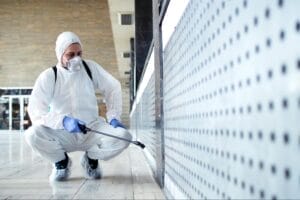Mold remediation is a crucial process to ensure the health and safety of a living environment. The responsibility for covering the cost of mold remediation depends on various factors, including whether you are a homeowner, renter, or landlord. This guide will help you understand who typically bears the cost in different scenarios.

If You’re a Homeowner
As a homeowner, you are generally responsible for paying for mold remediation. Mold can develop due to leaks, flooding, or poor maintenance. If the mold is a result of personal negligence, such as failing to address a leaky roof or not maintaining proper humidity levels in the home, the costs fall on you. It’s crucial to address mold issues promptly to prevent health risks and structural damage to your property.
The cost of mold remediation can vary widely based on the extent of the infestation and the area affected. Here’s a table providing a rough estimate of mold remediation costs:
| Extent of Mold Infestation | Cost Range (USD) |
|---|---|
| Small (10 sq. ft. or less) | $500 – $1,500 |
| Moderate (10 – 100 sq. ft.) | $1,500 – $3,000 |
| Extensive (Over 100 sq. ft.) | $3,000 – $6,000+ |
These costs include inspection, containment, removal, and repairs. The severity of the mold problem and the location within the home can influence these estimates significantly.
If You’re a Renter
Renters have a responsibility to report mold issues to their landlords as soon as they are discovered. While renters are expected to keep the property well-ventilated and clean to prevent mold growth, the landlord is typically responsible for paying for mold remediation.
As a renter, you should regularly inspect your living space for signs of mold, such as musty odors, visible mold growth, or water damage. Keeping the property ventilated, using dehumidifiers, and cleaning regularly can help prevent mold growth. If you find mold, document it and report it to your landlord immediately. Understanding your lease agreement and local tenant laws can also help you navigate any mold-related disputes with your landlord.
If You’re a Landlord
Landlords are responsible for providing a safe and habitable living environment for their tenants. This includes addressing mold issues promptly once they are reported by tenants. Failure to do so can result in legal implications and potential financial liabilities.
Landlords should perform regular inspections and maintenance to prevent mold growth and ensure the property remains in good condition. Landlords should also be familiar with local laws and regulations regarding mold remediation to ensure compliance and protect both their property and tenants.
Landlords should educate themselves on the common causes of mold and take preventive measures. Regularly checking for leaks, ensuring proper ventilation, and addressing water damage promptly can help prevent mold growth.
Mold Remediation in New Homes
In new homes, the responsibility for mold remediation often falls on the builder or contractor, especially if the mold is due to construction defects. Many new homes come with a warranty that covers structural issues, including mold caused by improper construction practices.
Homebuyers should be aware of the new home construction standards and warranty coverage provided by the builder. If mold issues arise in a newly constructed home, the builder or contractor should address them as part of their warranty obligations. Homebuyers should document any mold problems and communicate them to the builder promptly to ensure proper remediation.
Builders are responsible for ensuring that new homes are free from construction defects that could lead to mold growth. This includes using proper materials, ensuring adequate ventilation, and preventing water infiltration during construction. If mold is discovered in a new home, homebuyers should contact the builder immediately and request remediation under the terms of the warranty. Keeping detailed records of communication and inspections can help ensure that the builder addresses the issue appropriately.

Homeowners Insurance Coverage
Homeowner’s insurance may cover the cost of mold remediation under certain circumstances. Typically, mold remediation is covered if the mold is caused by a sudden and accidental incident, such as a burst pipe or storm damage. It’s important to review your insurance policy to understand the specific scenarios included in your coverage.
Many policies have exclusions and limitations, particularly if the mold is due to negligence or lack of maintenance. To file a claim for mold remediation, homeowners should document the damage, provide proof, and work closely with their insurance adjuster to navigate the claims process. Knowing the details of your policy can help you determine if your insurance will cover mold remediation costs.
Insurance policies vary widely, so homeowners should review their policies carefully to understand what is covered and what is not. Some policies may offer limited mold coverage or require additional riders for mold-related claims.
When filing a claim, providing thorough documentation, including photos, repair estimates, and records of the incident, can help facilitate the process. Working with an experienced insurance adjuster can also help ensure that your claim is handled correctly and that you receive the appropriate coverage for mold remediation.
How Much Does Mold Remediation Cost?
The cost of mold remediation can vary significantly based on the size of the affected area, the severity of the mold infestation, and the location within the home. For more detailed information on mold remediation costs, you can refer to our comprehensive blog post here.




